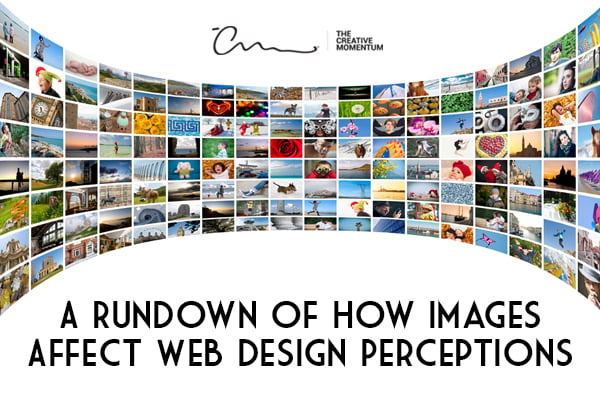
In the past, people frequently bought products they heard about on radio ads or read about in magazines. Today, the general population is reading less and watching more. Social media platforms that focus on images and videos show greater engagement than most text-based platforms.
Imagery is powerful; it can significantly effect our emotions and tell a story in an instant. This is especially true when images are used for the purpose of storytelling as part of your marketing strategy.
Four Main Factors to Keep in Mind
When you choose images for your website, keep in mind some key characteristics that people are looking for.
While your website visitors aren't necessarily conscious of the way these factors affect their perceptions, the truth is these factors have a strong impact on how customers view your products or services, and whether they will make a purchase.
1. Faces
 If you have a personal or business Instagram account, you’ve probably noticed that you get more engagement on photos of yourself or animals. Meanwhile, photos of landscapes or inanimate objects tend to attract lower levels of engagement. This is because people are programmed to bond with other people or other faces, like those of cats and dogs.
If you have a personal or business Instagram account, you’ve probably noticed that you get more engagement on photos of yourself or animals. Meanwhile, photos of landscapes or inanimate objects tend to attract lower levels of engagement. This is because people are programmed to bond with other people or other faces, like those of cats and dogs.
There are a variety of ways to incorporate more faces into your website design. You could start by commissioning high-quality photos of all the key members of your team, your employee of the month, or loyal customers. These photos personalize the business by matching names to faces. Some companies achieve a similar effect by using stock photos of other people.
2. Quality
Almost anyone can become a photographer these days. Most of us can create amazing photography and videos using our smartphones. Even so, not everyone has the skills or creativity to produce stunning imagery. Sometimes the desire to personalize a website leads a company to post low-quality candids. This reflects negatively on the quality of the company's product or service.
If the image contains data or instructional information, quality becomes even more important. The text must be legible and attractive. Otherwise, that information is lost. Examples could range from memes to labeled parts to infographics.
3. Theme
Website designers use images to set the mood for a website. This can have an immediate effect on people’s perceptions. For example, a wealth management company might show images of people who look young and successful or happily retired. Similarly, vacation retreats often post pictures that promote a sense of serenity, such as sunsets and smiling faces.
4. Placement
Most websites have a banner on the home page. That banner is often the first image that people see. Visitors to the site might also notice logos or featured images used as “cover photos” for articles. Within the articles, there might be additional images to better tell a story or to break up big chunks of text.
Website design plays a big role in how many photos can fit on a website. It also dictates where they fit, how they appear, and the size or ratio. Top-notch website designers create websites that suit the imagery needs of the business.
3 Types of Images
There are different ways to categorize the images used on a website. The following three categories relate to how marketers or business owners can use the images for storytelling.
1. Iconic Images
These are images that people recognize immediately, no matter what. That’s because these were originally created to look like what they mean and to mean the same thing to everyone. A common example is a stop sign or an arrow pointing in a particular direction.
Sometimes, images are also iconic because of the way they present information. For example, most people know how to read basic diagrams and charts. So, even though all diagrams are not the same, most people know how to interpret them.
Some business owners try to reinvent the wheel by creating new looks for email or settings icons. It’s always best to stick to the standard designs that people recognize. Be sure to test it on a few people first to prevent misunderstandings or potential embarrassment.
 2. Contextual Images
2. Contextual Images
As the name implies, these images draw their meanings specifically from the context they are used in. These images do not convey literal meanings or are not used with that intention.
For example, consider the website for a mental health clinic that promises to help people overcome substance dependence and grief. The website could include photos of people saying no to alcohol or standing in a cemetery.
A more contextual approach would involve using images that inspire happiness or the sense of normalcy people miss when facing substance abuse or grief. These images might include family dinners, a professional at work, or jogging in the evening.
3. Symbolic Images
Symbolic images are a middle ground between contextual and iconic images. The meaning is more apparent and literal than contextual images, but they are also less easily understood than iconic images.
Symbolic images rely on visual grammar to convey meaning, and this could vary between cultures. Consider, for instance, how the thumbs-up sign means a sign of approval on Facebook and in most countries. However, in some Middle Eastern and West African countries, it is offensive.
Business owners and marketers must fully research the symbols they consider iconic before using them in multi-cultural settings. This would come into play when moving a business overseas or when creating an online store that can attract buyers from anywhere.
The Bottom Line on Using the Right Images for Your Web Design
Choosing the right images for your website requires being thoughtful and knowledgeable about their purpose. Make sure images support the messages you're sending, and do your homework to make sure they'll resonate with your audience.
Work with professionals to choose ones that complement your website’s design, functionality, and goals. Contact The Creative Momentum for a quote.


